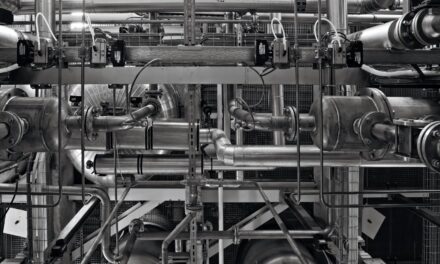![]() Across Europe, businesses face difficult trading conditions and cost reduction continues to top the agenda for supply chain directors, says Gerrit Jan Steenbergen, VP of 3i Competence Centre at Zetes.
Across Europe, businesses face difficult trading conditions and cost reduction continues to top the agenda for supply chain directors, says Gerrit Jan Steenbergen, VP of 3i Competence Centre at Zetes.
In an expanding market, companies tend not to focus on asset tracking and asset management. This is because when revenues are high, losses incurred from missing roll cages, re-usable containers or pallets, have less impact on the bottom line. When times are tougher, organisations justifiably look to squeeze every unnecessary cost from their supply chain and asset shrinkage is one that’s relatively straightforward to control with an asset tracking system.
Using auto ID technology such as RFID or vision systems, any assets can be tracked and traced. Armed with this additional information, process efficiency and quality can be improved, stock levels better managed and wastage reduced. In addition, for some industries, asset tracking can also contribute to improving fraud prevention through the elimination of counterfeit goods.
When considering the introduction of asset tracking within an organisation, it is important to ask the following questions: Which assets are business critical and need tracking? What is the end goal of tracking the asset? What is the financial cost to the organisation of losing the asset?
In addition to this, further questions to be answered include: What information needs to be captured and to what level of detail? What level of accuracy is needed? Do external stakeholders need to be involved? How will the data be stored and used by the organisation?
![]() The answers to these questions will help to determine whether ‘attended’ or ‘unattended’ asset tracking systems should be employed. Provided they can cope with the external environmental conditions, unattended systems based on RFID or vision technology offer a number of advantages over attended systems such as barcode scanning. For processes involving external stakeholders, or where the cost of items being tracked is particularly high, unattended systems may be more reliable and ensure greater data integrity. These systems are also more effective at preventing theft. A wide variety of different solutions exist which can be used to benefit organisations in a range of ways:
The answers to these questions will help to determine whether ‘attended’ or ‘unattended’ asset tracking systems should be employed. Provided they can cope with the external environmental conditions, unattended systems based on RFID or vision technology offer a number of advantages over attended systems such as barcode scanning. For processes involving external stakeholders, or where the cost of items being tracked is particularly high, unattended systems may be more reliable and ensure greater data integrity. These systems are also more effective at preventing theft. A wide variety of different solutions exist which can be used to benefit organisations in a range of ways:
Public hospital
As public spending faces ever greater scrutiny, hospitals need to ensure they maximise the use of expensive equipment and medical resources. With some hospital workers admitting they can spend a third of their time searching for equipment, hospitals commonly over-purchase to compensate for devices going missing.
RFID based asset tracking systems are ideal for such environments and allow the hospital to maintain an inventory in real time of available resources in addition to keeping a track of where assets are at any time.
Fresh foods producer
Sustainability is a priority for food manufacturers both as an element of corporate citizenship and to control costs. Interest in re-useable packaging such as plastic crates and roll cages is higher than ever. As these assets can cost 10 times as much as traditional packaging, ongoing tracking and management is essential to make the switch economically viable. The additional visibility an asset tracking system brings to the food producer also contributes to improving stock management and shrinkage levels, through better demand forecasting and lower wastage levels.
Retailer/e-tailer
For many retailers a third of total sales end up back in the warehouse and processing unwanted incoming goods is increasingly problematic for retailers. Currently as the economic climate forces shoppers to rethink their purchases and reflect on whether they really want the items, the practice of returning goods is more prevalent. Coupled with this, some retailers are facing an additional issue of counterfeiting and ensuring that items returned are indeed the genuine article shipped in the first place.
In the case of high value items, RFID comes into its own because tags can incorporate a unique identifier to prove the authenticity of an item as well as tracking the whereabouts of an item in the supply chain.
Logistics service provider
There is growing interest in outsourcing the provision of returnable plastic crates among organisations. In addition to maximising profitability levels, effective management of a pool of returnable crates (RPCs), by a specialist logistics service provider improves management and business decision making for the end customer, representing an additional value add for outsourcing.
Tracking RPCs using image capture has proven to deliver significant benefits for even the largest operators who manage 10s of millions of containers each year as they can monitor their whereabouts, condition and onward movements, sharing data with supply chain partners as relevant.
For cost conscious organisations, asset tracking is an essential part of good supply chain management. In the future as increasing numbers of organisations look to maximise their use of existing wireless technology and the costs of data capture technology reduce, it will become ever more widespread and play a significant part in improving decision making and operational performance.
Zetes
0845 520 0180


